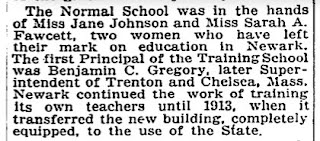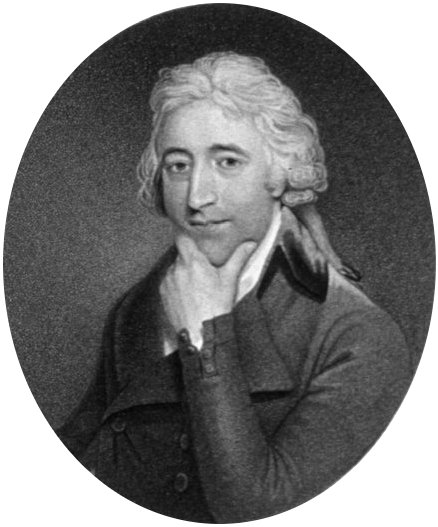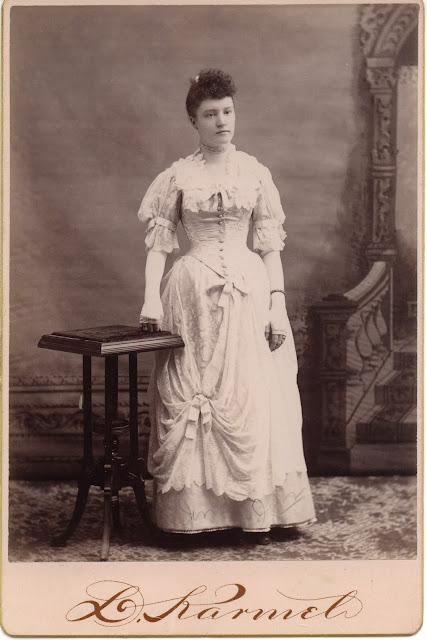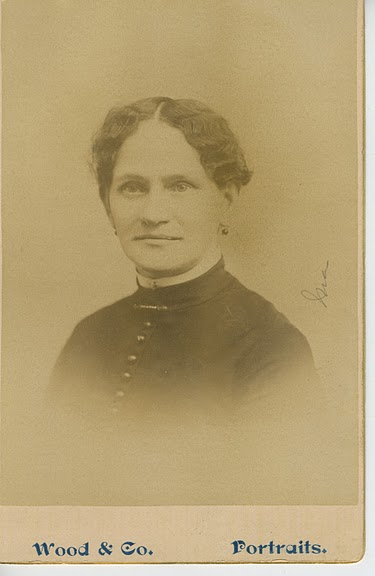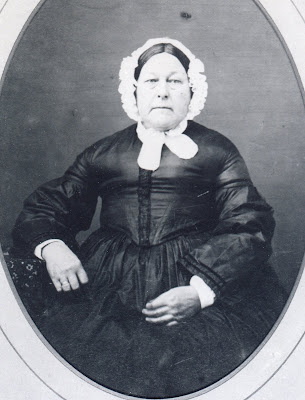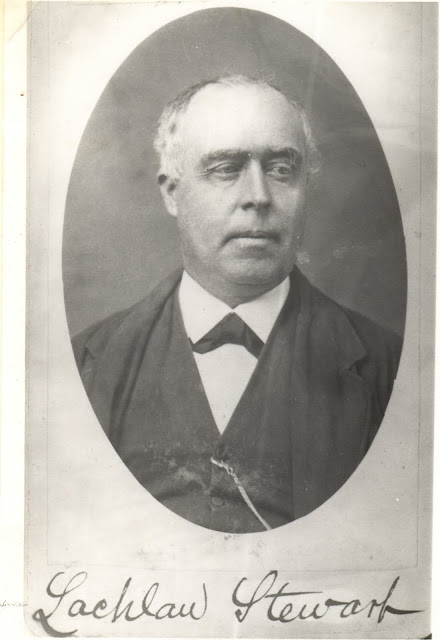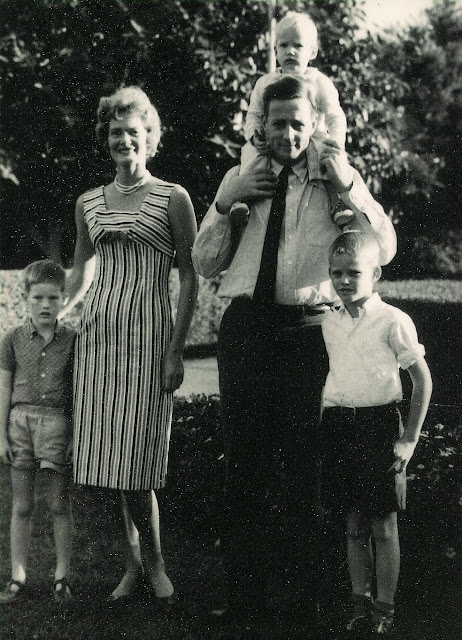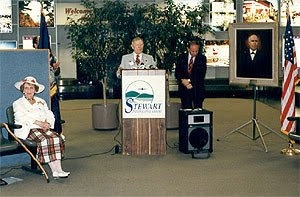Arthur Mead Edwards and Emma Cornelia Ward [Edwards] are the great grandparents of Joan Hutton Landis, Christopher and Rosemary Foster Louden, Barbara Chalfin Powers, and Bruce Chalfin, Dudley Foster, Ben Foster and Becky Foster Light. Also of Judy Foster Burke, Lynn Foster, Andy Foster and Ricky Foster.


Arthur Mead Edwards, MD
He was a doctor who taught at the
N.Y. Infirmary, founded in 1853 by Elizabeth Blackwell, the first female physician in the United States who was determined to provide care for the impoverished women and children of Lower Manhattan.
Emma Cornelia Ward was born in Newark, N.J., June 5, 1845 and died on March 28, 1896 in Clearwater, Fl. with Dr. Sarah R. Mead in attendance.
Arthur Mead Edwards married Emma Ward 4 April 1872.

Emma Ward - Margaret Foster [Hutton] had this photo, which was taken at the studio of L. Alman, 172, 5th Ave at the corner of twenty Second St in NYC. It was taken at the same sitting as a photo copied in the book Lives of NJ Women, which I have duplicated below.
Emma Ward received her education in her native city. In 1870 she was graduated from the Woman's Medical College of New York and was valedictorian, and with the exception of two years, spent in California, practiced medicine in the city of Newark, N.J. She was a member of the Essex District Medical Society. See
this short bio in the
History of Essex and Hudson Counties by Shaw.
They married, set up practices in Newark, N.J. and had two daughters Harriet Smith and Eleanor Pierrepont.
Joan T. Hutton [Landis] recalls the following about Emma:
At some point, the family went to San Francisco on the way to be medical missionaries in Japan, or so I remember. Something catastrophic happened there. Arthur and Emma never spoke to one another again and used their daughters as a means of communication. Theories I have heard discussed were that Arthur was beaten up by the Tong Gang and had a concussion, or stroke. He and she quarreled bitterly over some event. Arthur went on to live with Harry and Harriet Foster and my mother remembers him as a wonderful grandfather, in touch with many of the contemporary scientists and owning a very fine microscope, a present from Agassiz (sp. his professor at Harvard).
Emma continued to practice in Newark and bought land in Florida with orange groves. She died there perhaps of typhoid fever. Becky Foster [Light] did some research on her and believed that Emma came to prefer women and that this may have been at the source of the disagreement. Both the Ward and the Edwards families have very interesting backgrounds and it is hoped that Kit Foster will provide those.

[
Joshua Landis adds, January 16, 2010: Read a full biographical sketch of
Emma Ward here, which I have copied below. It is written by Susan Newberry in
Past and Promise, Lives of New Jersey Women
Emma Cornelia (Ward) Edwards, 1845-1896
Emmas Cornelia (Ward) Edwards, one of the leading women doctors in Newark and the state of New Jersey of her time, was among the first generation of women to be trained and inspired by the great 19th-century women pioneers of medicine, Drs. Elizabeth and Emily Blackwell. The first of seven children, four of whom reached adulthood, Edwards was born in Newark on June 5, 1845, to Deidamia (Bowles) and Caleb S. Ward. Her father was a grocer by trade and a member of the prominent Ward family, associated with Newark since it founding. His business at 498 Broad Street probably catered to the fine homes around nearby Washington Park, where his residence at 11 Washington Street stood on old family property. [You can see
Washington Park by clincking, here and moving around the picture.] He counted among his neighbors, and most likely his customers as well, his brother Joseph Ward, president of the Essex Country National Bank, and his more distant relative Marcus Ward, Philanthropist and governor of New Jersey from 1866 to 1869.
Emma Ward was descended from John Bowles who fought in the Revolutionary War. Emma's daughter, Eleanor Pierrepont Edwards, had the family history added to the Daughters of the America Revolution Lineage Book, published in 1897.
[
Parents of Emma Ward: A number of Caleb Wards are mentioned in the
History of Essex and Hudson Counties going back to the early 1700s. Here is
one example on page 459:
In 1819 Fire Company No 3 was organized and a new engine the first built in Newark was brought into use. It was constructed by Stephen Dodd and Caleb S Ward. In the early thirties two more companies Nos 4 and 5 were organized by some of the best citizens. In 1836 the several companies underwent some changes calculated to enable them to work more systematically and effectively.
Or this: "Caleb S Ward ordained May 1864."
Here is a further reference about collecting a past due Civil War pension:
From the Newark Daily Advertiser, February 21, 1853:
On the 19th inst., Francis Alexander, aged 2 years, and on the 20th inst., Joseph Bowles, in the 5th year of his age: children of Caleb S. and Deidamia B. Ward. The relatives and friends of the family are invited to attend the funeral this afternoon at 3 o'clock, from No. 9 Washington Street. Their remains will be taken to the Mt. Pleasant Cemetery for interment.]
Arthur M. Edwards was the great grandson of
James Smith (b. 15th June, 1727 - 8 March 1795), a wealthy non-conformist (Unitarian) wool merchant of Norwich, England, who married Frances Kinderley, only daughter of Rev. John Kinderley. She was born 5 November 1731 and died 4 February 1820. They had four children:
- James Edward Smith (2 Febraury 1759 - 17 march 1828) Married Pleasance Reeve, daughter of Robert Reeve of Lowestoft. She was born 11 May 1773 and died 3 February 1877 at 104 years fo age.
- Francis Smith (30 August 1764 - 11 September 1815)
- Frances Julia Smith (19 November 1776 to 11 April 1854)
- Esther Anne Smith, baptized 8 July 1778 - 29 Bovember 1851)
Francis Smith married Sarah Marsh on 24 June 1795. She died 23 May 1850. He died 11 September 1815. They had two children:
- Frances Catherine Smith (7 May 1796- 20 January 1869)
- Harriet Smith (21 May 1798 - 17 February 1871)
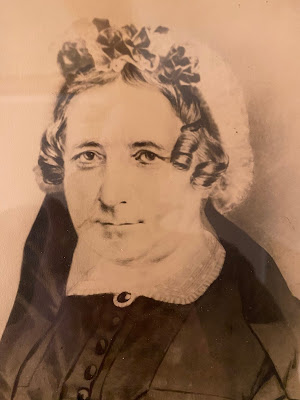 |
| Harriet Smith |
Harriet Smith married August 1820 to Charles Edwards of Wisbeach 27 (24 March 1797 - 30 May 1868).
 |
| Charles Edwards of Wisbeach 27 (24 March 1797 - 30 May 1868) |
Harriet Smith (Edwards) gave birth to six children:
- Charles Gilbert Edwards (9 May 1824 - 21 July 1902)
- Francis Smith Edwards (2 June 1826 - 1 June 1865)
- John Pierrepont Edwards (11 May 1833 - 11 September 1894)
- Fredrick Stuart Edwards (13 March 1835 - 11 September 1894)
- Arthur Mead Edwards (16 August 1836 - 13 September 1914)
- St George Elliman Edwards, who died in infancy.
Arthur Mead Edwards married Emma Ward 4 April 1872. They had two children:
- Harriet Smith Edwards (10 June 1873 - 23 April 1943)
- Eleanor Pierrepont Edwards (22 December1875 - 5 January 1956) m. 14 April 1903 to Howard Adams (8 December 1871 - ?) children: Howard Adams (30 June 1904 - ?), Pierrepont Adams (24 April 1913 - ?) To see a May 11, 1902, NY Time's comment on a wedding at which Eleanor was a bridesmaid, click here.
The following is a letter written by Arthur Mead Edwards at the age of 24 to the widow of James Edward Smith (2 Febraury 1759 - 17 march 1828), the famous botanist and president of the Linnean society. Lady Pleasance Reeve [Smith] (11 May 1773 - 3 February 1877).(click on the letter to enlarge)


You can read his best known work:
Life Beneath the Waters; or, the Aquarium in America, New York, 1858 as a Google book on line. Here is a picture from the book on page 124:

Also read his:
On the occurrence of living forms in the hot waters of California by
ARTHUR MEAD EDWARDS.
Emma Edwards attended local private schools for her early education. An illness at seventeen, requited several years of medical care, reputedly influenced her determination to become a physician, as did probably the tragic deaths of three siblings in their infancy and childhood. By age 21 she had persuaded several local doctors to let her study under them. At the time, medical schools were virtually closed to women. However, in 1868 a serendipitous breakthrough occurred. The Women's Medical College of the New York Infirmary, the first medical College run for and by women, was founded by the Blackwell sisters; it was only a short ride away n Lower Manhattan. Edwards successfully passed the entrance exam, immediately enrolled, and apparently excelled in the rigorous course of study, which was equal to the even more progressive than that of most 19th century American medical schools.
In 1870 Edwards graduated as the valedictorian of the college's first class and she remained associated with the school through 1871 in multiple capacities: as clinical assistant fro the Medical Clinic of the Faculty of Medicine, dispensary physician, and instructor in "practice." During this postgraduate year she is said to have further expanded the breadth of her knowledge by working for Dr. Edward Loring of New York, an esteemed ophthalmologist and perfector of the ophthalmoscope.
With her excellent training behind her, Edwards pursued private practice, the preferred avenue of medicine in the 19th century. In the 1871 Newark City Directory she advertised her services as an allopathic (regular medical) physician at her family home at 11 Washington Street. Despite the rarity of women in the medical profession the time, and the opposition to them, Edwards is said to have met with unusual success. Initially, the high standing of the Ward family name may have assisted in her acceptance by the community. In time, however, her demonstrated skills must have been the determining factor.
On April 13, 1872, she married Arthur Mead Edwards, a professor of theoretical and practical chemistry (1870-73) and microscopy (1872-73) at the Women's College of the New york Infirmary, and withdrew from active practice. They chose to make their home in Newark, which was a rapidly growing city in the need of doctors, and by 1873 Arthur mead Edwards had opened a general practice. Edwards apparently devoted herself to her duties as a young wife an a mother of two daughters, Harriet Smith (b. 1873) and Eleanor Pierrepont (b. 1875).
Whether this hiatus in Edwards's career was meant to be permanent is not known. In 1877 Arthur Mead Edwards accepted an appointment to teach chemistry at the University of Tokyo, newly established in 1868, and he launched his young family on the difficult first leg of the journey to japan, by way of California. The exact cause remains obscure, but in Berkley (or San Francisco) he fell ill and lost his memory to the extent that he felt compelled to refuse his academic post. He is then said to have practiced medicine in Berkley for two years.
In 1879 the family returned to Newark by train, shipping their belongings around Cape Horn for the second time, and joined Edwards's parents and siblings at
11 Washington Street. Exhibiting great resilience, Edwards reestablished her services as a doctor by the end of the year. Her husband apparently soon withdrew from active medical practice and until his death in 1914 concentrated on filed work, research, and published in the burgeoning young field of microbiology.
Edwards excelled at clinical work. Once again her general practice became large and thriving. Any lingering resistance to her as a women physician was removed by her proven medical abilities, energy, and conscientious attitude, and kind and tactful manner. Evidence of the range of Edwards's expertise and compassionate spirit is seen i the letter she wrote to the editor of the widely read
Medical Record of New York in 1979 advocating the use of an ingenious rawhide jacket for sufferers of tuberculosis of the spine in place of heavier, less comfortable ones of plaster or metal. Noting that she hoped that the deforming disease would soon be recognized and cured, she ended the letter: "the physical suffering saved will be enormous, but who can estimate the mental stress prevented?" (Medical Record, 407) The high regard in which Edwards's fellow professionals held her is attested to by her acceptance in 1880 to both the Essex Country and the New Jersey medical societies, through a process of competitive exams and elections, at a time when medical societies were only beginning to open their memberships to women.
In 1885 Edwards was joined in her offices at
11 Washington Street by a young fellow graduate of the Women's Medical College of the New York Infirmary, Dr. Sarah R. Mead. This loyal alliance lasted for more than ten years, and following Edwards's death, Mead continued her practice in the same area of the city and carried on some of her partner's charity work. Alice Hamilton Ward, Edwards' youngest sibling, born in 1865, was likely influenced by her sister's example to attend the Women's Medical College. Graduating in 1890, she shared a practice with Edwards and Mead before working on her own as a physician.
As with most Victorian women physicians, the middle class probably formed the backbone of Edwards's practice. The Newark City Health Department Delivery Records for 1887-92 reveal that she frequently assisted at the births of children of blue and white-collar workers of the community: die cutters, iron workers, printers, merchants, diamond brokers, clerks, bankers, and lawyers. The financial security thus afforded her and her family enabled her to devote countless hours, probably largely in a volunteer capacity, to serving the indigent and poor. Soon after her return to Newark, she began to work on the medical staffs of the Society for the Relief of Respectable Aged Women, the Home for Incurables and Convalescents and the Working Girls Club boardinghouse, both run by the YWCA. She also was one of the attending physicians of the Newark City Dispensary, which provided drugs, smallpox vaccines, and programs on child hygiene and other health concerns at little or no cost.
Edwards found still more time to be involved in efforts for social reform as well as her own self-renewal and enrichment. Dr. Elizabeth Blackwell had strongly exhorted her students to focus particularly on the health and welfare of children, and Edwards apparently was long aware of the high incidence of child neglect and mortality in Newark. (Her medical college thesis in 1870 had been on infanticide.) From 1882 to 1896 she fought to improve the lives of victims of child abuse, which numbered 5,000 annually in Newark alone, as a physician and director for the Children's Aid Society for the Prevention of Cruelty to the Children of Essex Country. She also promoted the free kindergarten movement in her city. Still at the center of debate over its efficacy in 1896, proponents such as Edwards toured the wide benefits of early education, particularly for the poor and working classes. Her daughter Harriet Edwards shared her belief in this progressive form of education and ran a kindergarten in her home from the year of Edwards's death in 1896 until 1900.
For Edwards's own self-improvement and the opportunity to socialize with women friends, she turned to the Ray Palmer Club, a reading association encouraged by and named for a Well-loved Belleville, NJ, preacher, poem and hymn writer. Bimonthly topics included literature, history, art, music, philanthropy, science, the home, and current events and helped link Edwards to the world outside of the demands of her work and family life.
In early March 1896 Edwards, tired and suffering from what was thought to be a slight ailment, took her usual trip to Florida for a brief respite. Within a week she showed signs of what may have been a recurrent malarial fever and that probably lowered her resistance to what was reported varyingly as typhoid fever or dysentery. Any of these diseases could have been contracted by her in Newark, where they were widespread.

On March 28, 1896, with
Dr. Sarah R. Mead (See her bio,
here) in attendance, she died in Clearwater, Fl. She was buried in Newark's
Mount Pleasant Cemetery in the family plot.
Tributes ran for days in the Newark papers, and her devoted friend and noted Newark art educator Sarah A. Fawcett donated a new central altar to the House of Prayer in her memory.
Sarah A. Fawcett helped found the first Normal School in Newark. Here is a paragraph from the New York Times articlethat is well worth reading in its entirety for a short and compelling history of the city:
"
NEWARK A TRADE CENTRE; Develops in 250 Years an Industrial System Reaching to the Ends of the Earth."
By J. WILMER KENNEDY. Assistant Superintendent of Newark Public Schools.
April 30, 1916, Sunday: Page X12, 3718 words
Edwards authored two articles: "The Raw-Hide Jacket for Spinal Disease,"
Medical Record 16 (1879): 406; and "Undeveloped Uterus with Apparent Absence of Ovaries,"
Medical Record 20 (1881): 653. Obituaries appeared in
Transactions of the Medical Society of New Jersey (1896): 359-60;
Medical Record 49 (1896): 852; the
Newark Daily Advertiser, Mar. 30, 1896;
Newark Evening News, Mar. 30, 1896; and the Woman's Journal (Boston) 27 (may 9, 1896).
[This biography of Emma was written by Susan Newberry a member of the Newark Historical Preservation Society]
Emma and Arthur M. Edwards co-authored a
"Report of the anniversary meeting of the Alumnae Association of the Woman's Medical College of the New York Infirmary. Held at the infirmary, March 24th, 1871.
Printed by order of the association. Authors Alumnae Association of the Woman's Medical College of the New York Infirmary, Emma C. Ward, Arthur Mead Edwards. Publisher: S. Angell, printer. Length 24 pages. Subjects: Women, Women physicians.
She helped establish the Essex County Society for the Prevention of Cruelty to Children.
In the month of February 1883 there was organized in Newark following in the wake of over forty other cities and towns a Society for the Prevention of Cruelty to Children. It found plenty of work to do. Many of the cases that come before the society are those of destitution and beggary the latter often the result of intemperance on the part of the parents or of unconquerable idleness. Many of the parents sin through ignorance rather than from design and they can be reached through the influences that can be brought to bear upon the children. The society started out to use all remedies according to the necessity of the case. It takes note of cruelty in its broadest sense which includes any form of injustice or wrong to a child or any perversion of its faculties or any neglect or destitution and it strives within its proper sphere to bring the discordant parts of human life into accord with the body politic to stimulate industry to promote morality and check intemperance. The original incorporators of the society were Thomas B Peddie, James W Miller, D Smith Wood, Gen William Ward, John M Rand MD, Christopher Roberts, JK Hoyt, John Hyler Smith, James Austin William,s Mrs TT Kinney, William A Smith, MD., Emma W Edwards MD....

The Ward family of Newark
is described in a biographical sketch of Marcus L. Ward, who served as Governor of New Jersey from 1866 to 1869, as follows:
HON. MARCUS L. WARD.
Hon. Marcus L. Ward, ex-Governor of New Jersey, was born Nov. 9, 1812, in the city of Newark, where his paternal ancestors have resided since 1666. The Wards are of English stock, and their home was in Northamptonshire, where the records of the family may be found. Stephen Warde married Joice Traford, and after his death his widow, with some
of their children, including John Ward, came to New England in 1630, and in 1635 settled at Wethersfield, Conn. John Ward came to Newark in 1666, in company with about thirty families, and these formed the first settlers on the shore of the Passaic, laying out the present city of Newark. A son of John Ward, of the same name, was shortly after married to Abigail Kitchell, the grand-daughter of the Rev. Abraham Pierson, the pious and eloquent pastor of the settlers, in honor of whose birth-place in England the name of Newark was conferred upon this, his new home. From such a stock one might well expect an honored progeny, and it is not too much to say that during seven generations this family have been distinguished by the highest qualities of integrity and personal honor.

Oddly, Marcus Ward died of "Malarial influences" in 1884 after visiting Florida with a portion of his family. He was not the father of Emma, as he was survived by only two sons out of the original eight children born to his wife, Susan L. Morris, but he was a relative.]
The prominent role of Wards in founding the city can be discovered in
Narratives of Newark From the Days of its Founding, 1666 - 1916, by David Lawrence Pierson. Josiah Ward helped the first woman to set foot in Newark.
Harriet Smith Edwards (10 June 1873 - 23 April 1943) married on 25 January 1900 to Harry Walter Foster (21 July 1870 - 15 December 1944)
Harriet Smith Edwards went to Smith College, but did not stay to finish.
Harriet Smith Edwards (10 June 1873 - 23 April 1943) and sister, Eleanor Pierrepont (22 December1875 - 5 January 1956)
She was always devoted to the church and sang in the choir where she met Harry Walter Foster whom she married on 25 January 1900. A strong believer in early education, she ran a kindergarten in her home from the year of Edwards' death in 1896 to 1900. Harriet and Harry had seven children,
- Dudley Edwards Foster (12 Dec. 1900)
- Margaret Agnes Foster (14 August 1902 -)
- Eleanor Pierrepont Foster in (22 February l904 - ) m. Bruce Chalfin
- Harry Lincoln Foster (12 February 1906 -
- Ralph Hamilton Foster (3 November 1907 - 27 March 1909)
- Philip Worthington Foster (1 June 1914 - )
- Richard Ward Foster (18 June 1914) (See his memoir, All Our Yesterdays.)
Harriet Foster and her children c. 1917
Back row L: Lincoln, Eleanor, Margaret and Dudley
In front: Richard and Phil
Ralph Hamilton Foster (3 November 1907 - 27 March 1909) at 1 year old, 1908, shortly before his death.
They lived in Newark and Roseville. Later, they would buy a farm in Milton, Conn. for summers. (See Ben Foster on this house which was adored by all the Foster children.)
"Laurel Hill" - the Foster summer home in Milton, Conn. - now owned by Ben and Zay Foster
Ben Foster writes, 13 January 2010:
This is Milton, Conn., where the family spent the summers, built in 1850, which unfortunately burned to the ground in 1946. The house along with barns and 110 acres belonged to Harry and Harriet Edwards Foster from 1910 until 1921, a summer house when the family lived in Newark, NJ. When they bought a house in Morristown, NJ, they sold the house in Milton, Conn., but the house had been home to all our parents' generation, Dudley, Margaret, Eleanor, Linc, Phil and Dick. Home at least in the summer, and also vivid home in the imagination, exerting such a strong pull that all but Dudley and Eleanor ended up living in Litchfield County, CT, at least for some of their years. Margaret, Linc and Phil lived out most of their adult years within an hour's drive of the Milton property. As you know, we now own this property, or what is left of it--a house situated on the old foundations plus about nine acres of mixed wooded and open land. It's even more rural than when our grandparents lived there, for the fields have grown up to forests and the village of Milton has lost citizens and saw mills and a knife and shears factory (thus Shear Shop Road, named for a knife and shears factory). I can't figure out who supplied the two photos of the old house, because we have never seen those particular photos, though we have one similar to the first. (Joan T. H. L. supplied the photos. Ben, I want your photo of Lavender Ledge.)
Harry Walter Foster (1870 - 1944) (Joan T. H. L.) was an inventor and tried to manufacture Strike A light cigarettes (no need for a match) but was stopped by the opposition. They moved to Morristown (date to be provided) where they bought
Kahdena and
Voorhees Hardware Store, founded in 1930 by Cook, Voorhees and Co.
Kahdena was a large three story house with a wide porch, gardens, greenhouse and tennis courts. When Voorhees finally went out of business, Harriet and Harry moved to an apartment on Washington St. where Harriet, now very crippled with rheumatoid arthritis, died on April 23, 1943. Harry, born in Dudley England and brought to the U.S. at one year old, was a hunch back. He was kind and shy and never discussed his deformity with his children. He died a year later in Morristown.
Fosters at Christmas, Kahdena, 1934: (Courtesy of Kit: click to enlarge)
Back row: Bruce Chalfin, Phil, Dick, Linc, Dudley
Front row: Eleanor, Mag, Harry, Harriet, Reggie (w/Becky in utero), Midge.
Children: BG, Joan, Barbara.
(Phil and Dick were unmarried, Becky, Ben and Lil Dudley were as yet unborn, and Lewis T absent)
1936 Xmas at Khadena:
Back from Left: Richard W, Lewis II, Dudley Jr., Dudley, Midge (Margaret Foster - Ms. Dudley), Harry Walter Foster, Eleanor Pierrepont l904 - Ms Bruce, Reginald T Foster - Ms Lincoln, Ben, Phil
Front: Barbara Chalfin, Bruce G. Chalfin, Bruce (B.G.)
Chalfin Jr., Mag, Harriet Smith Edwards, Joan T. Hutton, Harry Lincoln, Becky
Family group at Undermountain Rd, Falls Village, 10 August 1947
Back row: Mag, Ben, Dick, Eileen, Bunny, Linc
Front row: Rick, Lynn, Becky, Rosemary, Judy, Kit.

Margaret Foster's 80th birthday reunion 14 August 1982 at Millstream House, Lincoln and Timmie Foster's house in Falls Village, Conn.
Standing in Back: Kit Foster, Kendall Landis, Bunny Foster, Jay Louden, Rosie F. Louden, Joshua Landis, Joan Landis, Zay Foster, Becky Light, Timmie Foster, Christopher Landis, Ben Foster, Eileen Foster, Andy Foster, Lynn Foster, Judy Foster [Burke]
Seated: Philip W. Foster, Margaret Hutton, Lincoln Foster, Richard Foster
Front: Jill Foster (W. Harriet), Nicholas Foster, Evan Louden, Rachel Louden, Allison Light, Sharon Burke, Jeremiah Foster, and Nathaniel Foster
Read about each Foster and their families of their own pages:
- Dudley Edwards Foster (12 Dec. 1900)
- Margaret Agnes Foster (14 August 1914 - April 7, 1984)
- Eleanor Pierrepont Foster in (l904 - m. Chalfin
- Harry Lincoln Foster (12 February 1906 -
- Ralph Hamilton Foster (3 November 1907 - 27 March 1909)
- Philip Worthington Foster (1 June 1914 - )
- Richard Ward Foster (18 June 1914) (See his memoir, All Our Yesterdays.)











